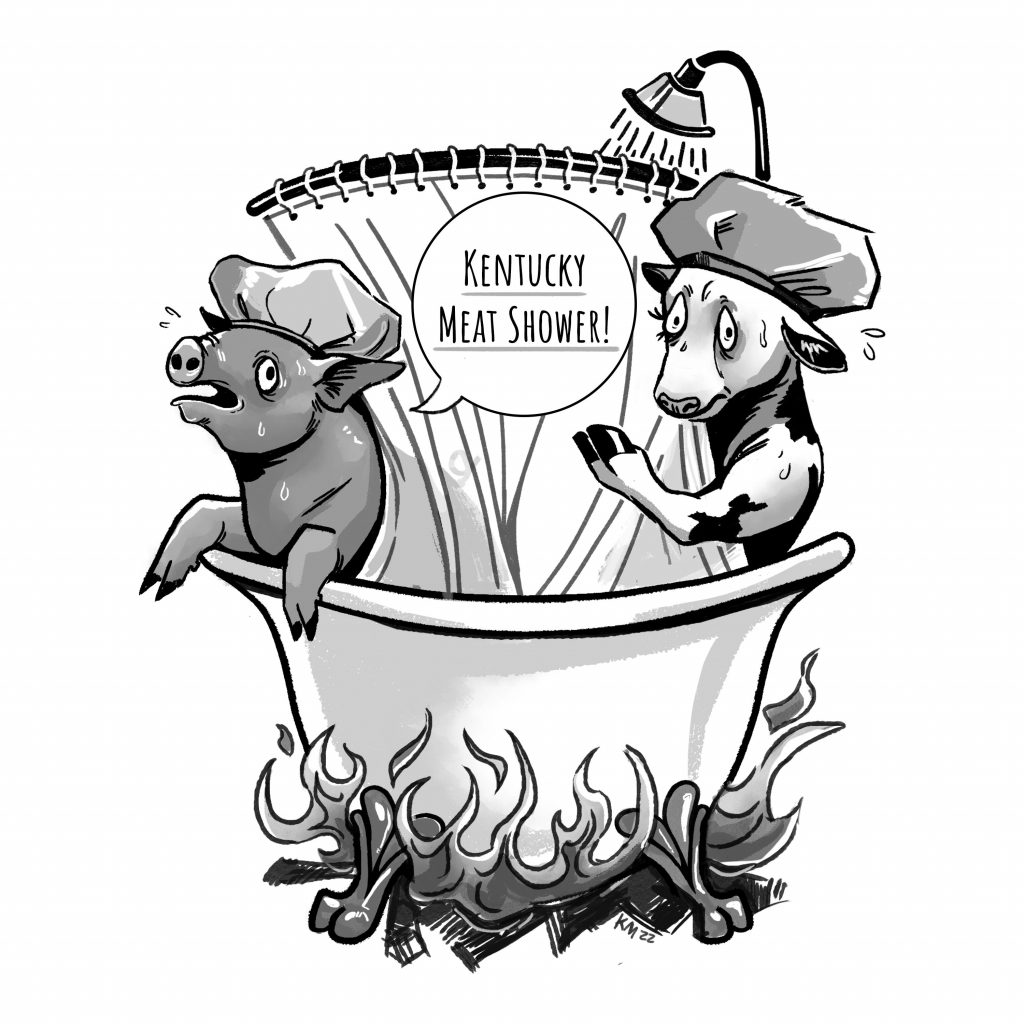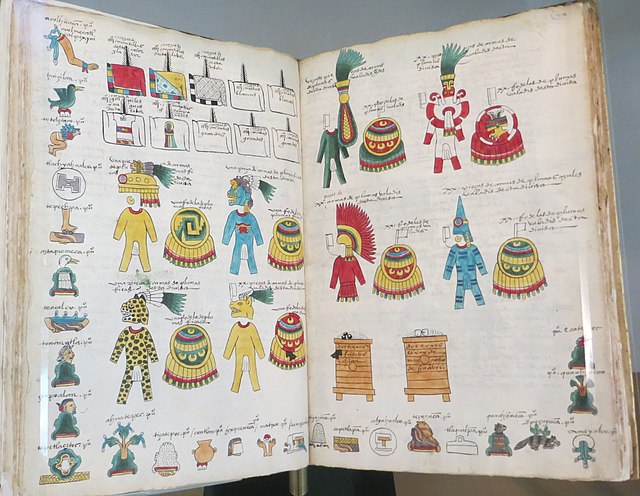

Loop back and reverse, until new unexpected patterns
with the intention to destabilize language
to really get at the core of what’s happening –“Pergamum” by Armand Hammer
If constructing the future and settling everything for all times are not our affair, it is all the more clear what we have to accomplish at present: I am referring to ruthless criticism of all that exists, ruthless both in the sense of not being afraid of the results it arrives at and in the sense of being just as little afraid of conflict with the powers that be.
Karl Marx
All items listed above belong in the world
In which all things are continuous,
and are parts of the original dream which
I am now trying to discover the logic of.
-“I Am Dreaming of a White Christmas: The Natural History of a Vision” by Robert Penn Warren
As I haven’t said in a long time: welcome to Kentucky Meat Shower, a zine that publishes ruthless criticism of culture, alienation, boredom and despair. I should probably add, “as written by Christopher Sloce”. It’s been close to 5 years since the original publication and the only person being ruthless here is me, as was designed.
There is also the obvious. Kentucky Meat Shower will now publish online at Kittysneezes. What was originally a Substack has now gone elsewhere. The muleskinnerpress.substack.com link is a zombie. I’m not going to delete it because it’s too much of a pain to move over everything. Not every issue of this project is so good it deserves to be transferred, and if somebody feels they need to read the earliest writing I’ve done for this project, that’s their funeral.
Big thanks, first of all, to Kittysneezes. I’m actually just as happy to be hosted on the site due to my appreciation of the roster hosted there. Without giving individual flowers due to a more scattershot appreciation I’m sure will grow in time, I do need to say that Rite Gud is part of the reason I wound up here, and thus, special thanks needs to go to Raquel S. Benedict and Matt Keeley for creating a space for writers to actually be thoughtful and demand more from writing, no matter the genre.
There are also, undoubtedly, people wondering why they should read onward after they’ve been thrown a project in the middle of the process. One that immediately begs questions: okay, where is the criticism? What culture? Why are you bored, alienated, and despairing? (Nobody needs an explanation for that).
It’s easier to just answer those questions.
Who Goes There?

My name is Christopher Sloce. I am a writer and zine maker who lives in Richmond, Virginia. I was born in the Appalachian Mountains where Virginia meets Tennessee and Kentucky, where I lived until I turned 18. I moved to Richmond, Virginia to get a degree in English, moved back home for a year to apply for MFA programs, didn’t get into any, and moved back to Richmond on accident when the Americorps opportunity I thought was in DC was actually here. Since then I’ve worked a picaresque series of 2010s shit jobs, from gig app delivery driver to several call centers. I’ve had a box cutter pulled on me at a homeless shelter and I’ve racked up a triple digit meal at a steakhouse on Washington’s dime (my handler says I’m very good conversation). I finally settled on library work after I got fired from Capital One, and have remained here since, because it’s a natural fit for temperament and interest.
I stress my day jobs because writing doesn’t come from nowhere. This is the result of my own effort, and it is work. Most writers have day jobs. I don’t see any point in pretending I don’t, especially when my day job is in the world of books.
Everything else is on a need to know, but a vague outline: I have a partner and a cat.
I NEED TO KNOW WHAT KENTUCKY MEAT SHOWER IS.
Kentucky Meat Shower began as a marketing tool and then it took on a life of its own.
When Substack first started gaining prominence, I realized I had an opportunity. Not only could I possibly expand my reach by have my magazine work delivered directly to people’s email addresses, I saw the “email” as another opportunity: I could basically write whatever the hell I want and it would show up in people’s inboxes.
At about issue 9, I began to expand my goals. Now, we entered the “blog” era. Posts on Kentucky Meat Shower did have a general format, but the “issues” were essentially longer blogs. This is very much a transitional era for the zine: I began to get more and more ambitious with what I could do on Substack, but I hadn’t quite decided Kentucky Meat Shower was a zine. That started at about issue #18, with those issues being treated like each one could be a separate zine.
Issues are considered one contiguous unit, with each “year” having a set visual theme (the first four issues from #18-#22 had digital and physical collages made by me, everything else since has been cell phone photos). The last few issues of the zine have constituted a very loose trilogy I entitled A Prophet of His Own, which is about very different forms of alienation in Richmond, Virginia.
It may seem easy to look at what I had done up to that point and go, “Well, actually, it’s not that different.” Maybe it’s not: the overall point is how I conceived the project. The “zine” form is why I still write it, because of its pliability. If you wanted to slot Kentucky Meat Shower in your head next to, say, Cometbus or even American Splendor as a creator owned project, that wouldn’t be taxonomical blasphemy, even if the “what” it’s about is quite a bit different.
All that still begs the question: what’s it about?
THE BEST ATTEMPT AT A DEFINING STATEMENT I CAN MUSTER
I didn’t have a great idea the minute I saw Substack on Twitter. I picked “Kentucky Meat Shower” because I’ve always been fascinated by anomalous events like that, it sounded good, and it was in honor of a state I lived in spitting distance from for a good part of my life. At the time, we were all fascinated with the rapper Blueface and the line “welcome to the meat show”, which I thought had some fun Cronenbergian resonances. It seemed pretty simple from there.
However, picking that name gave me a horizon to work towards. The event on its face is odd, but the likely explanation (vultures regurgitating) retains the oddness and wonder of life. Even though we’re presented with the meat vomited out of the sky, we can’t know what it’s like to be launched out of a vulture’s throat, and no matter what the scientific explanation is, once the meat is in front of us, we have to rack our brains to understand the event. No matter what critical perspectives you take there is the essential oddness of something happening to you. What I’ve only ever tried to do is capture life and what fascinates me in the most vivid detail, to show several layers of experience: experiencing the event as it happens, and experiencing understanding it later.
The style of the zine has always trended towards the feverish and poetic with a critical undergirding. There are endless numbers of people writing about the world around them in direct, journalistic ways, to say nothing of the ‘autofiction’ trend. Realism has been given a sort of moral valence that has extended to its formal elements. While, yes, I am writing about events that happen or aspects of reality or history, I think how am I about what I am about is of equal and maybe greater importance. This is a direct response to the contentification of everything, of our lives, of our confessions. The response that the only way to get through our navels is to staring a hole straight through them is awfully convenient to our market constructed lives, and selling “the truth” endlessly makes whatever truths someone is experiencing a commodity whose primary usefulness is something to attach advertising revenue to. If all of this sounds like I’m being difficult on purpose, you would be correct, but the purpose of being difficult is finding a more resonant path to catharsis that does not only rely on the a posteriori knowledge of personal essays.
What I am attempting to do, arguably across all mediums, is probably better captured by the combination of all those epigraphic quotes, somewhere in the middle of something like the Bermuda Triangle.
A CANON
The following is a brief introduction of essays and issues I’ll be porting over from the substack.
#9 was the first issue I felt challenged by, its publication being the “end” of the newsletter era, and a jump into uncharted waters. I’ll be reprinting both “Someone Somewhere is Traveling Furiously Towards You” as well as “This Is Not My Mother’s Room, This is Not My Mother’s Lap” as a single juxtaposed piece. In the first essay, the paranoid juxtaposition of Shoko Asahara and Belle Delphine still strikes me as inspired, carbon-dated or not. The second essay was inspired by my hatred of Bird scooters and a series of autonomous destructions by Richmond residents. I still support destroying them. Seeing how one piece could have uncanny resonances in another is why I switched to the “tri-fold” format of intro essay/body essay/song.
“Bird Watching” from #16 was written during the George Floyd protests. You can chalk up any oddities in the essay from suffering from a case of epididymitis while history was taking place, one so bad I didn’t leave the bed or couch for close to two weeks, but if I said it, I meant it.
“Horsehair Worm: The Epic” is from issue #18. A very odd bit of literary criticism that attempted to codify what it means to call something “epic” mockingly. I think this is, by far, the most underrated piece I ever wrote. I attempted to count for the failures inherent in calling something “epic” as a generic predictor of praise, and the horsehair worm is a good metaphor for monoculture.
Issue #19 will be reprinted in its entirety, as the ideal of the “zine” model. Even if writing about a dream autistic girl meme and Chris Chan seems too online for you, I think you should still give it a shot. I tried to write about Chris Chan from the remove of somebody who isn’t invested in the drama of her hurting herself and everybody around her to try and diagnose a very real sickness about some corners of the internet. I’ve always viewed it as the encapsulating story about the internet: a bunch of kids sitting over an anthill with a magnifying glass and some ants deciding they like being viewed up close. Dixie has Absalom, Absalom, the internet has Chris Chan. I don’t know if I’m the best writer about online, but nobody writes about online like I do, and that counts for something.
Issue #22 is an entire essay entitled “Praying to Kill the Man” about Lingua Ignota’s “I WHO BEND THE TALL GRASSES”. I have no further comment other than I’ve always wanted to hand her a handmade zine of the essay, so you can imagine my feelings about it.
From there, we will be publishing the issues that make up my current Kentucky Meat Shower project: A Prophet of His Own. The best description I can give is a tone poem of alienation, from culture shock to overwork that finally coalesces into cities and structures that actively alienate the people around them, until all institutions are as defined as much by how they alienate the people they are designed to serve. This work is the culmination of me stretching my wings as a writer and forcing myself to push myself beyond the easiest essayistic tropes. It includes issue #24 (a depiction of myself fresh from Wise and what it actually means to be Appalachian), issue #26 (finals crunch and further gentrification caused by VCU, my alma mater), and the debut of issue #27, an issue length work about what it’s like to work for an institution that is completely capable of alienating people when you want to do nothing but ease that alienation.
After that, the zine proper will be taking a long time to work on the next run of issues. But: in the meantime I may put out pieces here and there where it seems fitting and I’m particularly inspired. I still like essays, and I still like writing them.

